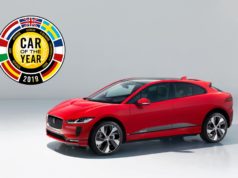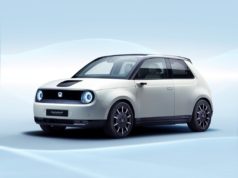The everyday search for parking places takes a toll on time and nerves. When there is an available parking place, Volkswagen has been assisting drivers for around 20 years by implementing a parking process that incurs the least possible stress. That is because available assistance systems have gone through continuous improvement over the years. The acoustic warning followed visual assistance. Twelve years ago, Volkswagen was the world’s first carmaker to offer a parking assistant with automatic steering.
In the latest generation, a Volkswagen can steer into the smallest of parking spaces, either longitudinal or perpendicular, and it automatically brakes in an emergency situation. However, today’s Park Assist is only one of many different systems in Volkswagen models for assisting drivers in parking.
In 1997, it beeped for the first time at Volkswagen – in a Golf Mk 4. Four ultrasonic sensors in the rear bumper enabled the first park distance control system. In 2005, Volkswagen doubled the number of sensors in the Passat – two times four sensors. The Passat B5 then had audible park distance control at both the front and rear. Volkswagen took the next step with its Optical Parking System (OPS) in 2010. The bars shown on the display visualised the distances to obstacles around the vehicle for the driver when manoeuvring. Just two years later, a 360-degree OPS system was installed in the Golf for the first time; it could show obstacles all around the vehicle.
Twelve years ago, Volkswagen showed a pioneering spirit one more time
The brand was the first carmaker to implement park assist steering, and this represented the beginning of making the lives of Volkswagen customers safer and more convenient. The innovative system helps the driver by autonomously executing optimal steering movements to arrive at an ideal position when parking. Park Assist scans the parking space, assigns a starting position and makes the steering movements fully automatically – the driver only needs to accelerate and brake. Over the course of the years, Park Assist has continually become more intelligent based on systematic advances in its development, and it can now park in the tightest of parking spaces, which drivers could hardly steer into without the system.
Just four years after the system’s world premiere, the first fundamental “2.0” update arrived: two-stage parking manoeuvres became multi-stage. In addition, the original requirement of “vehicle length plus 1.40 metres” has been significantly reduced to a mere “90 centimetres plus vehicle length”. Just two years later, perpendicular parking was added. Thanks to increasingly more complex algorithms, it was possible to utilise a total of twelve ultrasonic sensors on the vehicle to scan the surroundings and compute the manoeuvres more precisely.
In the latest 3.0 generation introduced in 2015, practically no wishes are left unfulfilled. Park Assist only needs 80 centimetres of extra space and can park in parking spaces that most car drivers would rather skip altogether. And it is now even possible to park in a perpendicular parking space in a forward direction. Emergency braking is also available today. This nearly eliminates parking collisions within the system limits or at least minimises their damage.
At a glance – the development of systems for safe and reliable parking
1997 – First park distance control with four ultrasonic sensors in the rear bumper
2005 – Park distance control, front and rear
2006 – World’s first park assist steering (Park Assist)
2010 – Optical Parking System (OPS)
2010 – Park Assist 2.0
2012 – 360-degree OPS
2012 – Park Assist 2.0 with perpendicular parking
2015 – Park Assist 3.0
A little inspiration for your next camping trip. #animation #camping #vwmicrobus #volkswagen pic.twitter.com/UixrhVWnuK
— Volkswagen (@Volkswagen) April 2, 2018
































